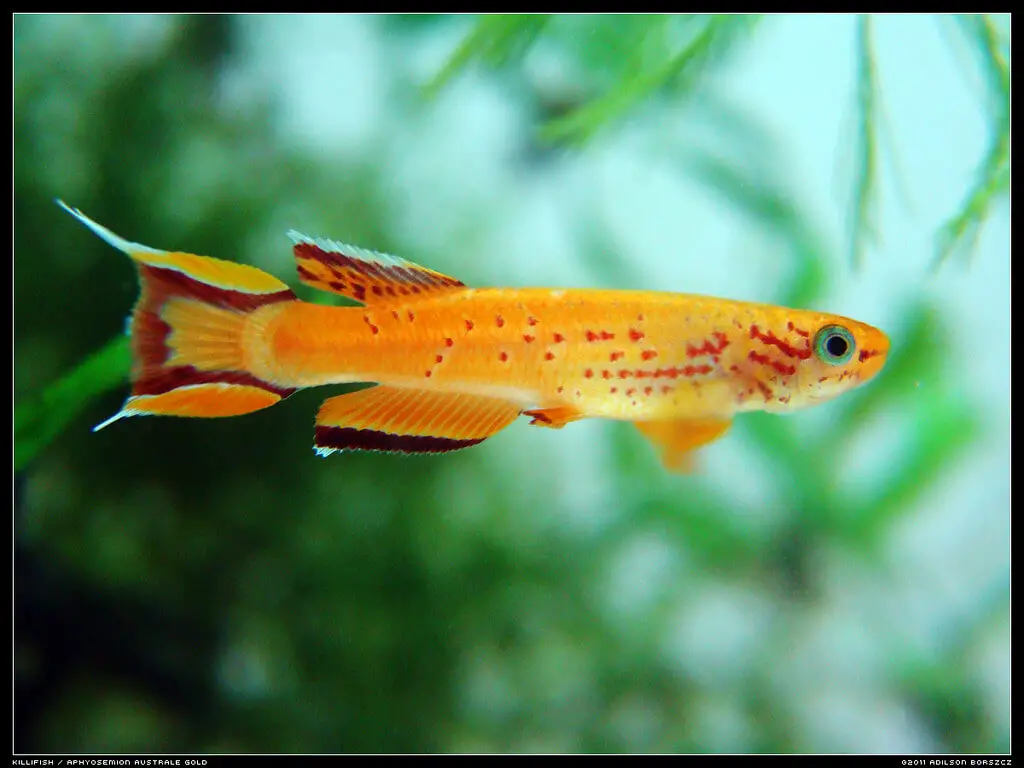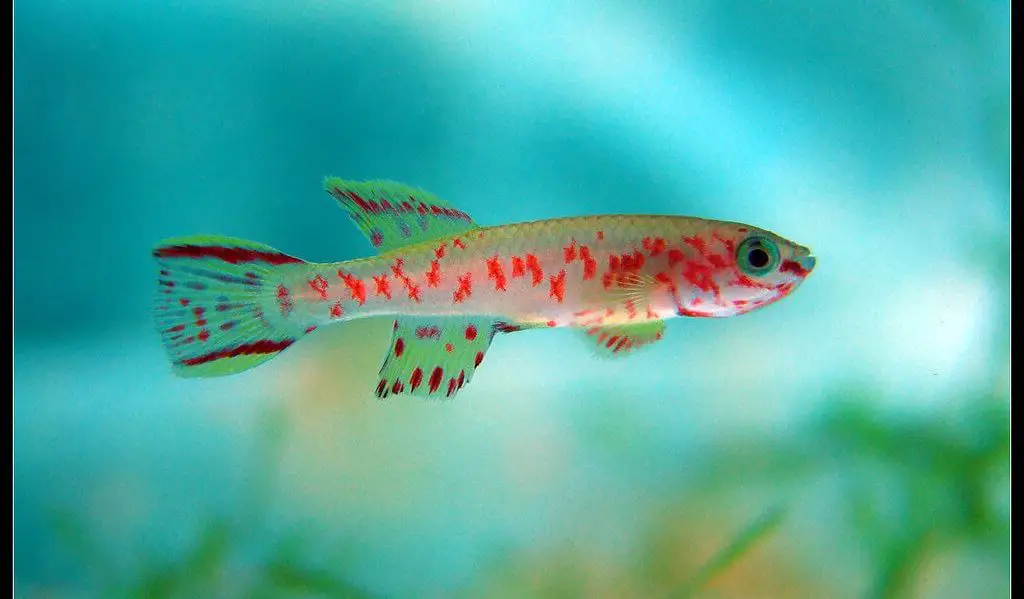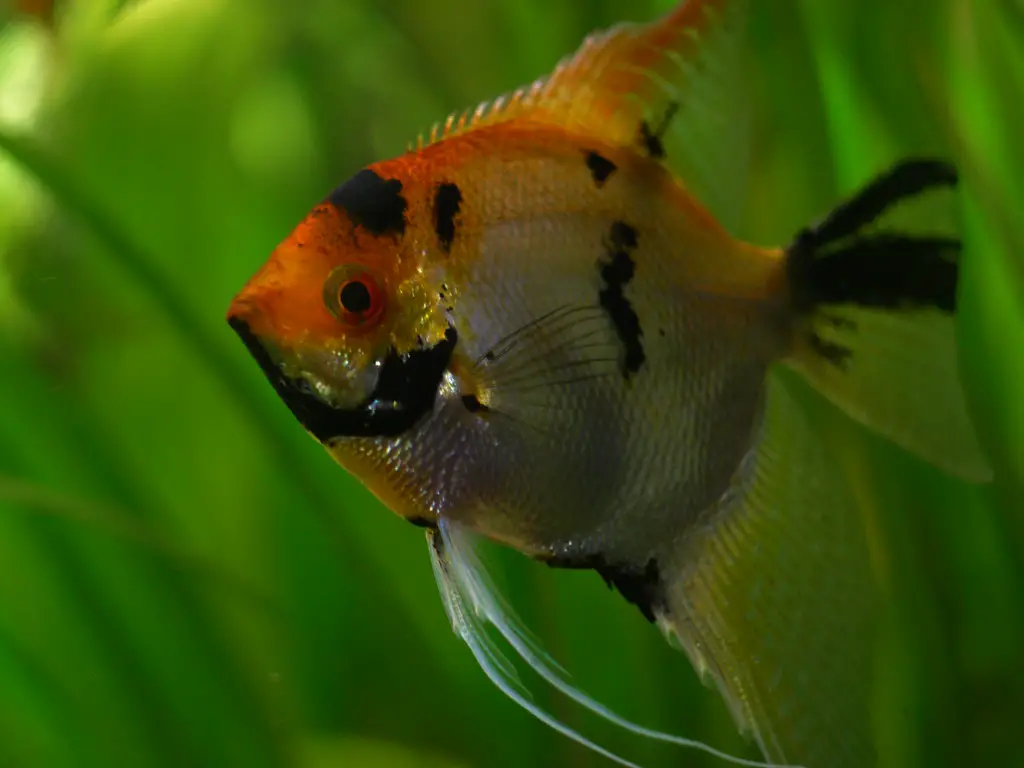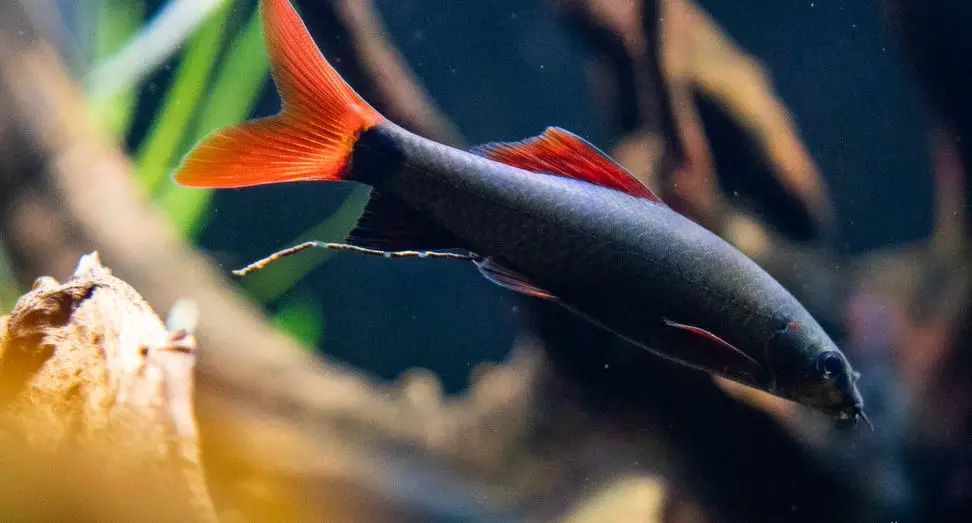People who have an interest in fishkeeping choose to keep colorful and beautifully patterned fish. If you look into the aquarium of these types of people, you will not miss Killifish. Killifish are one of the most beautiful fish having vibrant colors and patterns. For this reason, killifish are very prominent fish in a home aquarium. You will not regret purchasing this fish. Also, you can keep them in a small tank however you might be confused with killifish tank size or how many killifish you can keep in a 10-Gallon or a 20 Gallon aquarium.
How many killifish you can keep in a 10-Gallon or a 20 Gallon aquarium? – 1 inch of fish requires 1 gallon of water to survive. A killifish grows up 2 to 3 inches. Therefore, 1 killifish requires 3 gallons of aquarium water. As some of the tank space is covered up with decorations let’s say about 2 gallons. So, you could place 4 adult killifish in a 10 Gallon tank and 8 adult killifish in a 20 Gallon aquarium.
Killifish are native to different regions. You can find them in various natural territories such as shallow subtropical and tropical waters in every continent with the exception of Australia and Antarctica. The water stream that this fish inhabits can be moving or flowing including freshwater, brackish water as well as hot water.
Many people are misinformed that Killifish are fish “killer-fish”. However, this is not true at all. In fact, the word “Killi” comes from the Dutch word for stream. Hence, making killifish a small stream fish.
Not many fish can live happily in small aquariums. This is not the case of killifish. This fish will be perfect for you if you want to have a small space for your tank. Additionally, these fish are among the hardiest fish and can harmonize with different water conditions.
Therefore, even if you are a beginner, with good research, you will not find it very difficult to keep killifish. However, you can sometimes be confused about how many killifish to keep. As most of the beginner aquarists purchase small fish tank like the 10-gallon one. I wrote this article for those who are searching for how many killifish you can keep in 10 Gallon tank or 20-Gallon.
This article can help you with this problem. Continue reading.

Housing Killifish
Before you purchase killifish or any fish, first you should be sure about the tank. Most people house killifish in a species tank. Killifish can have different ranging sizes, from 1 to 4 inches to more than 6 inches in length. Due to this, you will have plenty of options in regards to which killifish to choose.
If you wish for small killifish that grows to 2 to 4 inches then a 10-gallon tank will be a perfect one for you. This tank is relatively smaller than community tanks. And you will be only keeping the killifish in a 10 Gallon tank. This will make it easier for beginner fishkeeping enthusiasts without having much previous experience as well.
Killifish Tank Size, Number of Killifish in 10-gallon Aquarium
After you have determined the tank and the fish, there is still a lingering question, how many species of killifish can you have in your tank? Since a 10-gallon aquarium is a small space, overcrowding is not very good. You will need to be careful regarding the number of killifish you are going to keep. Let us clear your confusion.
You should obey a thumb rule when determining the maximum number of fish. Most people use 1-inch fish per 1 gallon to define the maximum quantity of fish.
Let us consider you are getting a killifish that grows up to 2 inches. Therefore, in a 10-gallon tank, you can keep 10 gallons / 2 inches = 5 killifish at most (suggestion:4 killifish). Do not go for 5 killifish as some of the space on your tank is covered by decorations. You can limit the number of killifish from 2 to 4 in a 10-gallon tank. Likewise, if you have a 20-Gallon aquarium and want to create species only tank, you can go for 8 killifish in your 20-gallon fish tank.
I recommend you to start with fewer fish. Having fewer fish can help you interact and care for them easily. Once you are familiar with the fish and its nature, you can add more. However, in a 10-gallon I would not recommend adding more than 4. If you want to add more killifish, you need to choose a 20-gallon community tank.
We are talking about a 10-gallon tank here. If you are a beginner, start with 3 killifish. This trio should consist of two females and one male. This is because when you keep multiple male killifish in a small space, there can be a conflict between them. Male killifish are aggressive and they see other males as competition.
Do not forget to close the tank lid tightly as killifish are great jumpers and very enthusiastic. The fish can sometimes launch themselves out of the aquarium if you are not careful.
Is it Possible to add more Killifish to the 10-Gallon tank?
Many people want to full aquarium and love to keep it a bit crowded. It is not exactly impossible and strict that you can only keep 3 killifish. I personally want to see my aquarium full house. Hence, I have a few tricks from where you can make it work.
Keeping your aquarium dense requires more maintenance. You can more killifish if you can provide them with rightful tank conditions and a secure environment. You should monitor and cultivate a good filtration system. This is utmost importance since keeping much fish can lead to an acceleration in the development of harmful toxins. Killifish are particularly quite intolerant to dirty water.
As I have mentioned earlier, it is important that you do not keep multiple male killifish. If you want to add more of the fish, make sure that you killifish in 2:1 female to male ratio.
Female killifish are peaceful in nature and are harmless to each other. They do not cause chaos in the tank environment, unlike the males. Thus, you can keep as many females as you want.
You have to be careful with the water conditions when you add more killifish. I will describe the necessities required further in this article.
Tank Conditions
Killifish are hardy fish, they can tolerate a wide range of water parameters. However, they cannot live a healthy life if their habitat is not stable; fluctuation in their environment. It is your duty, as a pet owner, to provide for their needs. Try not to complicate your life and your fish’s life with poor care and maintenance.
As human beings, we are familiar with the effect our environment has on us. Slight changes can cause a drastic impact on our health. This goes the same for your fish. The closed aquarium environment makes it hard for them to thrive if not nurtured properly.
You should clean, decorate and maintain the right water parameters for the fish to live happily and healthily. Let me point out some measures that you should not miss.
Temperature
Fish are cold-blooded animals. Their body temperature depends on the water’s temperature. So, temperature plays an important role in developing a healthy fish body. Without the right temperature, there is a possibility that it affects the biochemical reaction of your fish.
For killifish, the ideal temperature should range between 70° to 75° F. You Should use heaters to regulate and maintain this temperature at all times. And a thermometer to monitor your aquarium water temperature.
When purchasing a heater, get your killifish tank an automatic heater. These heaters maintain your tank water to the temperature that you preset in the heater.
pH and Hardness
Some killifish requires acidic water and some alkaline water. This is because the killifish originates from different parts of the world having different water conditions. Therefore, you need to conduct thorough research when purchasing this fish.
The general pH level that killifish prefers ranges from 6.0 to 7.0. Make sure that this remains constant, as you should avoid fluctuation in pH level at any cost.
This is not as critical as maintaining the pH level. Some killifish require hard water whereas some require soft water. Most of the killifish prefers hardness ranging from 120 to 160 ppm.
To maintain pH and hardness in your tank, do a regular water change.
Filtration System
In order for your fish to remain healthy and for the prosperity of species living in the tank, you must maintain a stable environmental condition. You can provide your fish as much support as you can but sometimes the work can be too much for you. This is where the filtration system comes in.
The filtration system in your aquarium regulates and maintains the water conditions. The filtration system serves as an assistant to boost the quality of your tank. It can help you filter out different waste materials that are not humanly possible.
The main task of an aquarium filter is to break down the harmful toxins that can develop over time inside the aquarium. Since an aquarium is a closed ecosystem, the water can be dirty; all the wastes excreted and leftover food particles can become a toxin to your fish. Thus, there will be an increase in ammonia, nitrites and other harmful chemicals. The filtration system helps to break down these compounds into less toxic nitrates.
In the case of killifish, you keep them in a small 10-gallon aquarium. To be honest, it is harder to maintain small aquariums than the larger ones. This is because small tanks get polluted easily. Furthermore, killifish appears to suffocate and die because of the development of unwanted materials, as there will be a lack of oxygen.
A good choice of filtration for killifish is the canister filter or a Hang on Back filter. These filters are better because it provides both mechanical and biological filtration, and some of them also have chemical media to purify your tank water to some extent. A Hang On Back filter is the most suitable filter for small tanks.
As both the canister filter and a Hang On Back filter are external filter they are easy to maintain too and do not take up space in your tank.
Decorations in the Tank
Killifish likes shady places and low lighting setup. You can achieve this by planting various fresh aquatic plants into the tank. The live plants not serve as decorative items but also enhances the growth of your fish and improves water quality.
To add, live plants can consume toxins and help in cleaning the tank environment. Killifish also need some hiding space in the tank. This can be fulfilled with the help of adding various plants.
You can add live aquatic plants such as java moss, java fern, anubias, etc. These collections are also known as Greenpro Driftwood Décor Plus Live plants. You can also put some driftwoods. Adding these will help to provide your killifish with nutrients like cellulose and lignin helping to improve tank environment.
Adding Substrate
A substrate is a part of the decoration of the tank trying to replicate the natural habitat of fish. It is not necessary to add a substrate in your tank. You can leave the floor of your aquarium bare if you want to. However, people do not prefer this look. Most people choose gravel as their substrate.
The most common type of substrate is dark gravel. If you are willing to do this as well, make sure that you choose gravel that does not harden the water. Furthermore, if you are purchasing bottom-dwelling killifish, do not use gravel. Instead, you can use peat that does not have any fertilizers or additives.
Fish Diet
Feeding your pet fish is the most crucial when it comes to fish care. This is the part where most people get confused and overfeed the fish. This is not the correct way to build a healthy fish life.
You need to have a fixed time to feed your fish. Knowing about what your fish prefers is important. For healthy growth and benefit of your fish, you must provide them with a portion of well-balanced varied food.
In the case of killifish, they are carnivores. Killies mostly like to eat live food and people prefer making their own food. These fish do not willingly eat frozen or dried foods. Hence, you need to feed them with live foods such as daphnia, brine shrimp, mosquito larvae, tubifex worms, blackworms, and white worms.
Overfeeding
Yes, there is such a thing as overfeeding your fish. This is extremely dangerous. Fish cannot perform well and can get sick if you overfeed them. Therefore, as people who are taking care of the fish, we should know exactly when to feed the fish and how much to feed.
Regular Maintenance
It is not enough to leave the tank as it is. Your task does not end when you install filters and feed your fish. There has to be regular maintenance and conservation. Preserving the tank environment and making it a good place for your fish to thrive is our responsibility.
You need to notice the changes happening in your tank. Waste can grow over some time, which you should not be ignorant of. Once you see these developments, you have to act on immediately. You also need to remove the food particles that are not consumed by your fish. If you leave this unattended, it can lead to the development of toxins that will hamper your fish.
You need to change your water by 10% to 20% every week to ensure the balanced ecosystem of your tank. Not only that, you should clean your filters, heaters and other items in the tank repeatedly so that they are not contaminated.
As a helping hand and to test your tank water, get yourself API master test kit for freshwater aquarium. I have been using this kit for years now. This kit will help you monitor your tank water condition.
Conclusion
I hope that this article was helpful in providing you with enough information about the number of killifish that you can keep in a 10-gallon or a 20-gallon tank. Not just that, I hope that this article has guided you about the care and maintenance of the tank conditions for killifish as well.
If you want to know more about other fish, you can read our other articles.






